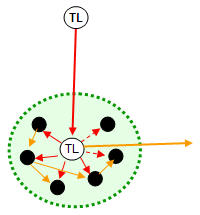A1 or other authorization link gives the team its overall purpose (charter, mission)
B1 or other process link represents delivery of team’s output
|
Teams Provide Resources or Workflows

